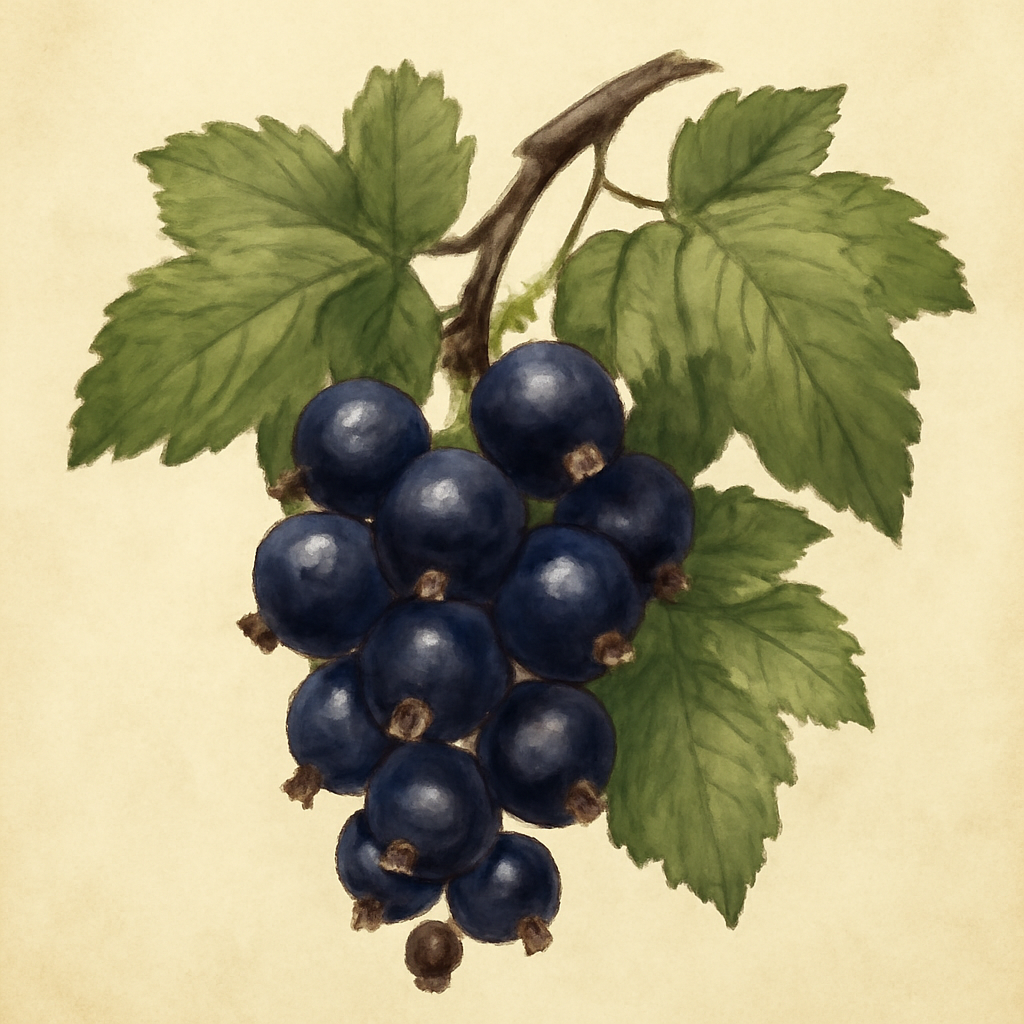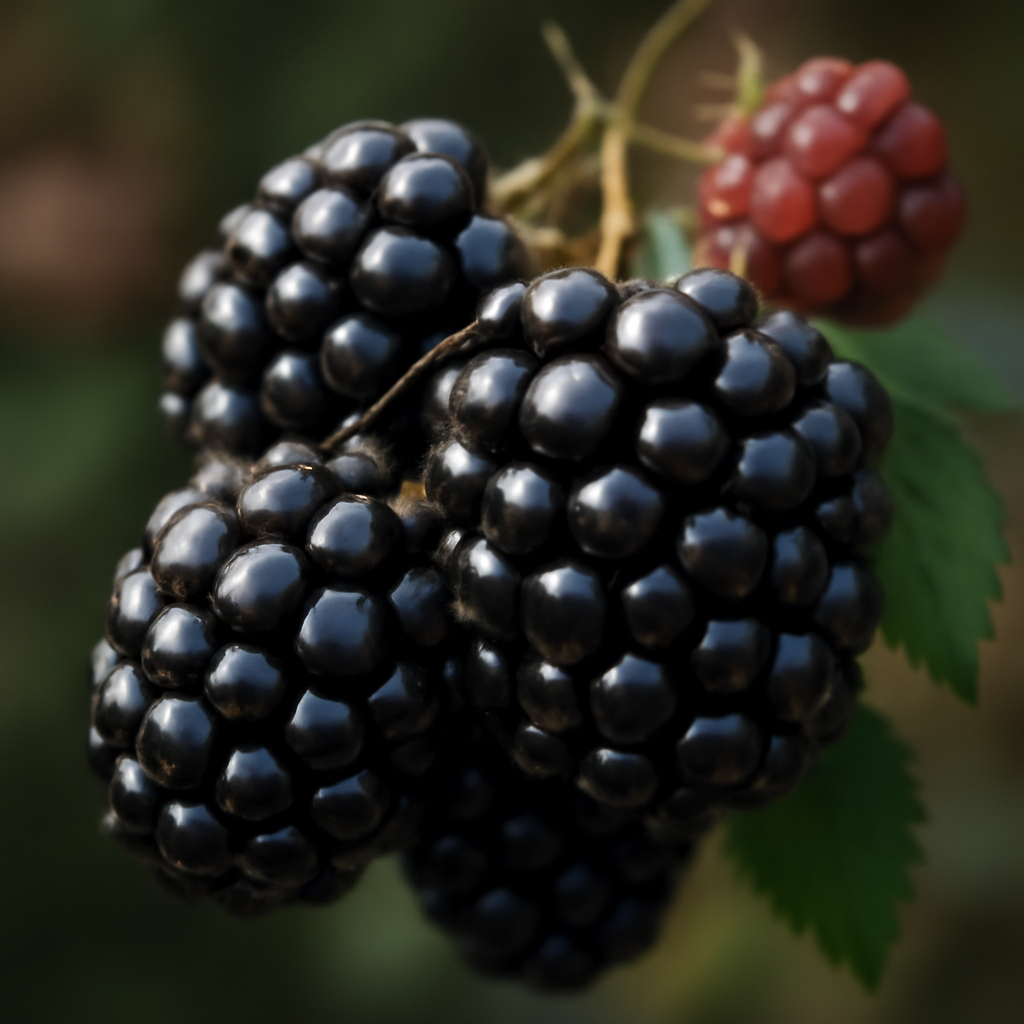Key Takeaways
- Blackcurrant and Blackberry are distinct in their regional distributions and cultural significance within borders.
- Blackcurrant is characterized by its smaller, tightly packed berries, while Blackberry features larger, drupe-like fruits.
- Legal restrictions on Blackcurrant cultivation exist in some countries due to plant disease concerns, unlike Blackberries.
- Their roles in local cuisine and traditional practices vary, reflecting their geopolitical boundaries and agricultural policies.
- Understanding their geopolitical contexts helps clarify why certain regions favor one over the other in cultivation and trade.
What is Blackcurrant?

Blackcurrant, known scientifically as Ribes nigrum, is a shrub native to parts of Europe and Asia. It produces small, dark purple to black berries that are highly valued for their flavor and nutritional content.
Historical and Cultural Significance
Blackcurrant has played a vital role in European culinary traditions for centuries, especially in countries like the UK and France. Historically, it was used in jams, liqueurs, and medicinal remedies. Its cultural importance is also reflected in traditional festivities and local recipes. The berries’ association with health benefits, such as vitamin C richness, made it a staple in folk medicine. Over time, blackcurrant became a symbol of regional agricultural identity, especially in areas where it was cultivated extensively. Despite its popularity, some regions faced restrictions on its cultivation due to plant disease concerns, affecting its cultural footprint. As a result, blackcurrant remains a key crop in certain geopolitical zones, symbolizing local heritage and agricultural resilience.
Botanical Characteristics and Growth Habits
Blackcurrant plants are deciduous shrubs growing up to 1.5 meters tall with five-lobed leaves. They thrive in temperate climates, preferring well-drained soils with adequate moisture. The berries develop in clusters on short stalks, maturing in late summer. Their dense foliage offers good ground cover, which can influence local ecosystems. The plant’s flowering period attracts pollinators, supporting regional biodiversity. Although incomplete. Cultivation methods vary depending on regional policies, impacting plant health and berry yield. In some borders, genetic varieties are selected for disease resistance, affecting the plant’s growth habits. Overall, blackcurrant’s adaptability to specific geopolitical landscapes influences its agricultural practices and regional significance.
Legal Restrictions and Cultivation Policies
In countries like the United Kingdom and parts of the EU, blackcurrant cultivation has encountered restrictions due to concerns over the spread of white pine blister rust, a plant disease. These restrictions have limited planting areas, shaping regional agricultural policies. Conversely, in countries like Russia and certain Asian regions, blackcurrant cultivation is encouraged and supported through subsidies or research initiatives. The geopolitical boundaries often determine the legal status of blackcurrant farming, impacting trade and local economies. Some countries have developed disease-resistant cultivars to circumvent restrictions, facilitating regional cultivation. These policies reflect a complex interplay between agriculture, health concerns, and international trade agreements. Consequently, blackcurrant’s cultivation status varies significantly across borders, influencing regional markets and cultural practices.
Economic Role and Trade Dynamics
Blackcurrant plays a crucial role in the economies of specific regions, especially where it is cultivated extensively. It is processed into juices, concentrates, and dietary supplements, contributing to export earnings. The geographic boundaries influence trade routes and tariffs applicable to blackcurrant products. Countries with favorable policies promote blackcurrant exports, bolstering local industries. Conversely, restrictions in some regions limit blackcurrant trade, creating disparities between neighboring countries. The crop’s value chain also involves local labor markets, with seasonal harvests providing employment. International agreements and phytosanitary standards further shape how blackcurrant crosses borders. The geopolitical context thus directly impacts blackcurrant’s economic significance within regional and global markets.
What is Blackberry?

Blackberry, scientifically known as Rubus fruticosus, is a bramble native to various regions in Europe and North America. It produces larger, drupe-like berries that are popular for consumption and culinary uses.
Historical and Cultural Importance
Blackberry has been a part of rural and indigenous diets for centuries, often gathered from the wild. Its significance in local traditions is evident in folklore and seasonal festivals. In some cultures, blackberry picking is a communal activity that fosters social bonds. The berries have been used in traditional medicine, valued for their antioxidants and vitamin content. In regions where borders define land use, blackberry cultivation was often informal, rooted in natural landscapes. Today, some borders have formalized blackberry farming, influencing local economies. Its cultural image is linked to rural identity and simple, seasonal practices, The plant’s presence in borders influenced by colonial histories continues to shape regional customs.
Botanical Traits and Growth Environment
Blackberry plants are sprawling shrubs or vines with woody stems that can reach up to 3 meters in length. They prefer sunny environments with well-drained, slightly acidic soils. Their thorny canes produce clusters of large, black or dark purple berries in late summer. The plant’s extensive root systems enable it to survive in semi-wild landscapes, making it resilient in many border regions. Pruning and trellising are common cultivation practices that improve yield and accessibility. The berries develop a sweet-tart flavor, appealing to consumers across borders. The plant’s adaptability to various climates influences its regional cultivation policies. In some border areas, blackberry farming is a staple, while in others, it remains a wild-harvested resource. These factors shape its regional importance and cultivation methods.
Legal and Agricultural Contexts
Unlike blackcurrant, blackberry cultivation faces fewer restrictions, enabling widespread farming across many borders. Its hardy nature and low susceptibility to major plant diseases make it a preferred crop in diverse climates. However, some regions regulate the use of pesticides and harvesting techniques to maintain quality standards. In border regions with intensive farming, regulations may promote sustainable practices to protect ecosystems. International trade of blackberry products is facilitated by fewer phytosanitary barriers, promoting regional exchange, In some places, invasive blackberry varieties are monitored to prevent ecological issues. The absence of strict restrictions in many border zones has led to extensive commercial cultivation, supporting local economies. The geopolitical boundaries thus influence the scale and methods of blackberry farming less than they do for blackcurrant.
Trade and Market Dynamics
Blackberry is a globally traded fruit, with major production zones including North America, Europe, and parts of Asia. Its flexible cultivation allows for large-scale commercial farms and smallholder producers. Border policies and trade agreements influence export and import flows between neighboring countries. The fruit’s popularity in fresh markets, jams, and processed goods drives international demand. Price fluctuations depend on harvest yields, weather conditions, and regional policies. In some borders, local consumption dominates, while in others, blackberries are exported extensively. The crop’s resilience and marketability make it a key player in regional agriculture. Its trade dynamics are less constrained by geopolitical restrictions compared to blackcurrant, fostering broader regional integration.
Comparison Table
Below is a detailed comparison of Blackcurrant and Blackberry across various aspects:
| Parameter of Comparison | Blackcurrant | Blackberry |
|---|---|---|
| Native Regions | Europe, Asia, North Africa | Europe, North America, parts of Asia |
| Berry Size | Small, about 1 cm diameter | Larger, up to 2.5 cm diameter |
| Plant Type | Deciduous shrub with dense foliage | Woody vine or sprawling shrub |
| Legal Restrictions | Some countries restrict due to rust disease | Few restrictions, widely cultivated |
| Typical Uses | Juices, jams, medicinal teas | Fresh consumption, desserts, jams |
| Climate Preference | Cool, temperate zones | Moderate to warm regions |
| Propagation Method | Cuttings, seeds (less common) | Stem cuttings, layering |
| Harvest Season | Late summer | Mid to late summer |
| Growth Challenges | Susceptible to white pine blister rust | Prone to thorns, some fungal issues |
| Economic Impact | Limited in some regions due to restrictions | Extensive, with global markets |
| Trade Volume | Restricted in certain borders | High export volume in many countries |
| Ecological Role | Supports pollinators, native habitats | Provides food for wildlife, invasive potential |
Key Differences
Here are some standout distinctions between Blackcurrant and Blackberry:
- Plant structure — Blackcurrant grows as a dense shrub, while Blackberry is a vine or sprawling shrub, affecting how they are cultivated and managed.
- Berry size and appearance — Blackcurrants are small, about 1 cm in diameter, whereas blackberries are significantly larger, approximately 2.5 cm, with a drupe-like structure.
- Legal restrictions — Blackcurrant cultivation faces bans or restrictions in some borders due to disease concerns, unlike blackberries which are less regulated.
- Regional cultivation policies — Countries favoring blackcurrant often impose strict controls, whereas blackberry cultivation is more free-flowing across borders.
- Market focus — Blackcurrants are primarily used in processed products and health supplements, whereas blackberries are popular as fresh fruit and in desserts.
- Ecological impact — Blackcurrant can support native pollinators but may be invasive if planting outside natural borders, while blackberry can be invasive, impacting local ecosystems.
- Crop resilience — Blackberries are more hardy with fewer disease restrictions, giving them an advantage in regions with challenging climates or borders with strict phytosanitary rules.
FAQs
Are there any specific border conflicts that influence blackcurrant trade?
Yes, in regions where borders are politically tense, blackcurrant trade can be affected by restrictions aimed at controlling plant diseases or protecting local agriculture. Countries may impose phytosanitary measures that hinder cross-border movement, impacting regional markets. For example, restrictions in the EU have historically limited blackcurrant imports from certain countries to prevent disease spread. These border conflicts influence not only trade volumes but also local cultivation practices. Sometimes, diplomatic relations determine the ease with which blackcurrant plants or products move across boundaries, shaping regional economic ties.
How do regional policies affect blackcurrant breeding programs?
Policies in some countries restrict the introduction of new blackcurrant varieties due to disease fears, which limits genetic diversity. Conversely, regions with supportive policies may fund breeding programs to develop resistant strains, expanding cultivation areas. These policies influence the availability of specific cultivars tailored to local climates and disease resistance. International cooperation or restrictions impact the spread of improved varieties, affecting regional competitiveness. Breeding programs often operate within the boundaries set by legal and phytosanitary standards, shaping the genetic landscape of blackcurrant crops in different zones.
Does border geography influence the traditional uses of blackcurrant and blackberry?
Absolutely, border geography often dictates how these fruits are integrated into local cuisines and medicinal practices. In some regions, blackcurrant’s role in traditional remedies is prominent due to cultural preferences or historical cultivation practices within borders. Blackberry’s wild harvesting traditions are often tied to rural border communities with access to natural landscapes. Political boundaries can also influence the availability of these berries, leading to regional specialties or variations in preparation methods. These cultural distinctions rooted in borders contribute to diverse culinary identities surrounding each fruit.
What future geopolitical trends might impact blackcurrant and blackberry cultivation?
Shifts in international agreements on plant health and trade could either ease or tighten border restrictions, affecting cultivation zones. Climate change and border policies combined could influence where these crops are grown, possibly expanding or contracting suitable regions. Increased cooperation between neighboring countries might promote cross-border cultivation and trade, benefiting both crops. Although incomplete. Conversely, rising tensions could lead to stricter controls, limiting access to certain borders. Technological developments, like disease-resistant cultivars, may also mitigate border restrictions, shaping future cultivation landscapes for both blackcurrant and blackberry.